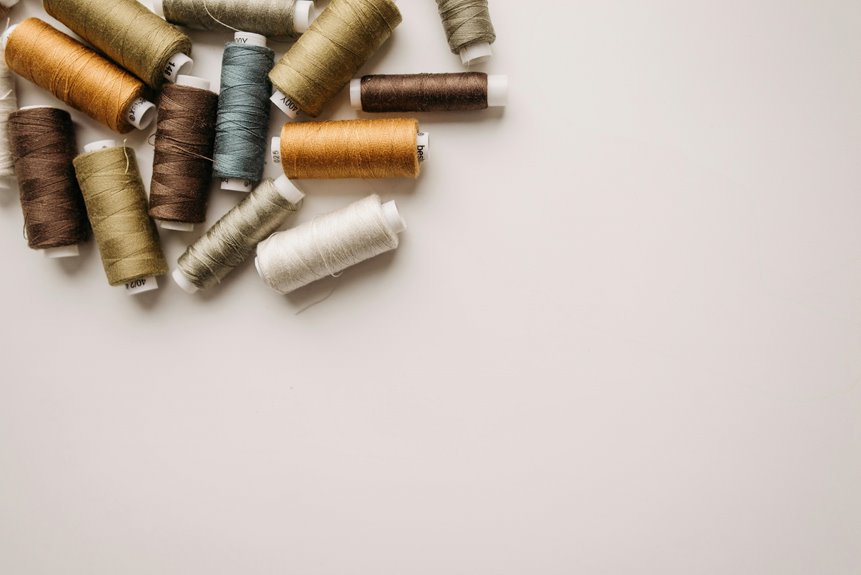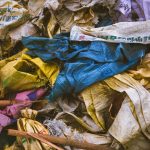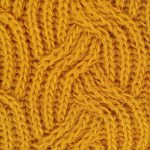If you choose fabric made from coconut fibre, you’ll get a strong, lightweight, and moisture-resistant material derived from the coconut husk. It’s breathable, eco-friendly, and biodegradable, perfect for warm weather wear and durable home textiles. The fibres are carefully processed and spun into yarn to create a comfortable, long-lasting fabric that resists mildew and requires minimal care. Keep it dry and hand wash gently to maintain quality. There’s plenty more to discover about its uses and sustainability.
Table of Contents
Key Takeaways
- Coconut fibre fabric is made from the outer husk of coconuts, offering durability, water resistance, and biodegradability.
- The fibres are extracted via retting or decortication, then spun and twisted into strong, breathable yarn for weaving.
- This fabric suits sustainable fashion and home textiles, including summer dresses, rugs, upholstery, bags, and curtains.
- Hand wash with mild soap and air dry away from direct sunlight to maintain fabric quality and longevity.
- Store coconut fibre fabric in a cool, dry place to prevent mildew and preserve its natural texture and durability.
Understanding Coconut Fibre and Its Origins
Although you mightn’t realize it, coconut fibre comes from the outer husk of coconuts, which grows on coconut palm trees primarily found in tropical regions.
Coconut fibre comes from the tough outer husk of coconuts growing on tropical palm trees.
When you see those rough, brown husks, that’s where the fibre originates. This natural material, often called coir, is made up of stiff, coarse fibers that protect the coconut inside.
You’ll find that coconut fibre is durable and water-resistant, making it useful beyond just fabric. It’s been used for centuries in mats, brushes, and ropes.
When you consider its eco-friendly nature, you can appreciate why it’s gaining popularity in sustainable textiles. Understanding where coconut fibre comes from helps you see its potential as a resource that’s renewable, biodegradable, and abundant in tropical areas.
The Process of Turning Coconut Husk Into Fabric
You start by collecting the coconut husks, often using traditional or mechanical methods.
Then, you extract the fibres through processes like retting or decortication.
Finally, you spin these fibres into yarn, preparing them for weaving into fabric.
Husk Collection Methods
Before the coconut husks can be transformed into fabric, you need to collect them carefully to preserve their fibers. Start by gathering mature coconuts, as their husks contain the strongest fibers.
Once harvested, separate the husks from the coconut shells without damaging the outer layer. You can collect husks directly from coconut plantations or salvage them from processed coconuts, ensuring they’re dry to prevent mold.
Avoid using husks that are overly wet or decomposed, as they weaken the fiber quality. Store the husks in a well-ventilated area to maintain their integrity until you’re ready for further processing.
Fibre Extraction Techniques
Once you’ve collected the coconut husks, the next step involves extracting the fibers through a series of careful processes.
First, you soak the husks in water to soften the outer shell. Then, you beat or crush them to loosen the fibers.
Afterward, you separate the coarse fibers from the softer material by hand or using machinery. Next, you wash the fibers thoroughly to remove dirt and impurities.
Finally, you dry the fibers under the sun to prepare them for fabric production.
Here’s what the fiber extraction involves:
- Soaking husks in water for several days
- Beating or crushing softened husks
- Manually or mechanically separating fibers
- Washing fibers to clean thoroughly
- Sun-drying fibers for readiness
This process readies the fibers for the next step: yarn spinning.
Yarn Spinning Process
Three key steps transform coconut fibers into yarn: carding, spinning, and twisting.
First, you’ll card the fibers to separate and align them, making them smooth and ready for yarn.
Next, during spinning, you draw out the fibers, thinning them into long, continuous strands. This step requires skill to keep the fibers evenly distributed and strong.
Finally, you twist these strands together, increasing the yarn’s strength and durability, which is essential for fabric production.
Each step demands attention to detail, as the quality of yarn affects the final fabric’s texture and resilience.
Key Characteristics and Benefits of Coconut Fibre Fabric
Coconut fibre fabric offers a unique combination of durability and sustainability that makes it an excellent choice for eco-conscious consumers.
Coconut fibre fabric blends durability and eco-friendliness, perfect for those who care about the planet.
When you choose this fabric, you get a material that stands up to wear and tear while being gentle on the planet. You’ll appreciate its natural texture and strength, perfect for long-lasting use.
Here are some key benefits to keep in mind:
- Lightweight yet tough, ideal for everyday items
- Naturally resistant to moisture and mildew
- Biodegradable, reducing environmental impact
- Breathable fabric that stays comfortable in warm weather
- Low maintenance, requiring minimal washing and care
Common Uses in Fashion and Home Textiles
You’ll find coconut fibre fabric gaining popularity in sustainable fashion for its eco-friendly qualities.
It’s also perfect for durable home textiles like rugs and upholstery that stand up to daily use.
Let’s explore how this versatile material fits into both fashion trends and practical home applications.
Sustainable Fashion Trends
While many materials claim eco-friendliness, fabrics made from coconut fibre stand out for their durability and sustainability.
You’ll find this fabric gaining popularity among designers focused on sustainable fashion trends. It’s lightweight, breathable, and naturally resistant to odors, making it ideal for everyday wear.
When you choose coconut fibre fabric, you’re supporting eco-conscious production that reduces waste and pollution.
Imagine incorporating this versatile material into your wardrobe with:
- Flowing summer dresses that stay fresh
- Casual shirts with natural texture
- Stylish bags with rugged charm
- Hats that breathe in the heat
- Lightweight scarves for all seasons
Durable Home Textile Applications
Because it combines strength with natural appeal, fabric made from coconut fibre proves perfect for durable home textiles. When you choose this fabric, you get long-lasting curtains that resist wear and tear while adding a rustic charm to your living spaces.
It also works great for upholstery, giving your furniture a robust, textured finish that stands up to daily use. You’ll find this fabric ideal for rugs and mats too, as it’s naturally tough and easy to maintain.
Plus, coconut fibre fabric’s moisture-resistant qualities make it suitable for kitchen and bathroom accessories, like placemats and coasters. By incorporating this material, you guarantee your home textiles not only look good but also endure the demands of everyday life without losing their unique character.
Eco-Friendly Fabric Advantages
Although many fabrics flood the market, coconut fibre stands out for its eco-friendly advantages. When you choose coconut fibre fabric, you’re opting for sustainability and durability that benefit both fashion and home textiles.
You’ll appreciate how this natural material reduces waste by utilizing coconut husks, a byproduct often discarded. Plus, it requires less water and chemicals compared to conventional fabrics.
Here’s what you can expect from coconut fibre fabric:
- Breathable and moisture-wicking clothing perfect for warm weather
- Stylish, biodegradable bags and accessories
- Durable upholstery that adds rustic charm to your home
- Eco-friendly rugs that resist wear and tear
- Lightweight curtains that promote natural airflow
Environmental Impact and Sustainability of Coconut Fibre
When you choose coconut fibre as a fabric material, you support a sustainable option that reduces environmental strain.
Coconut fibres come from the husks of coconuts, a byproduct that would otherwise go to waste, so you’re making full use of natural resources. The production process uses minimal water and chemicals compared to synthetic fabrics, which means less pollution and lower energy consumption.
Plus, coconut fibre is biodegradable, so once you’re done with the fabric, it won’t linger in landfills for decades.
Tips for Caring and Maintaining Coconut Fibre Fabric
To keep your coconut fibre fabric looking its best, you’ll want to handle it with care and follow specific maintenance tips. This natural material is durable but benefits from gentle treatment to prolong its life and maintain its texture.
When caring for your fabric, consider these key tips:
- Avoid machine washing; opt for hand washing with mild soap.
- Air dry the fabric away from direct sunlight to prevent fading.
- Use a soft brush to remove dirt and debris gently.
- Store in a cool, dry place to prevent mildew growth.
- Iron on low heat if necessary, using a cloth barrier to protect fibres.
Frequently Asked Questions
Can Coconut Fibre Fabric Be Blended With Other Natural Fibers?
Yes, you can blend coconut fibre fabric with other natural fibers like cotton or linen. This enhances durability and comfort, giving you a versatile, eco-friendly textile that’s both strong and breathable for various uses.
Is Coconut Fibre Fabric Hypoallergenic for Sensitive Skin?
Think of coconut fibre fabric as a gentle breeze—it’s naturally breathable and resists irritants. You’ll find it’s often hypoallergenic, making it a soothing choice if you’ve got sensitive skin that loves comfort without fuss.
How Does Coconut Fibre Fabric Perform in Extreme Weather?
You’ll find coconut fibre fabric performs well in extreme weather—it’s breathable, moisture-wicking, and durable. It keeps you cool in heat and provides insulation during cold, making it a versatile choice for various climates.
Are There Any Common Allergies Related to Coconut Fibre Fabric?
You might worry about allergies, but coconut fibre fabric rarely causes reactions. While some with sensitive skin could experience mild irritation, most find it hypoallergenic and comfortable, making it safe for everyday wear and bedding.
Can Coconut Fibre Fabric Be Dyed Easily at Home?
You can dye coconut fibre fabric at home, but it’s a bit tricky because it’s coarse and absorbs dye unevenly. Using fiber-reactive dyes and pre-treating the fabric helps you get better, longer-lasting colors.
- Where to Buy Suede Fabric in the Philippines - July 12, 2025
- What’s the Fabric That Feels Like Suede but Resists Water? - July 12, 2025
- How to Get Pen Out of Faux Suede - July 12, 2025





